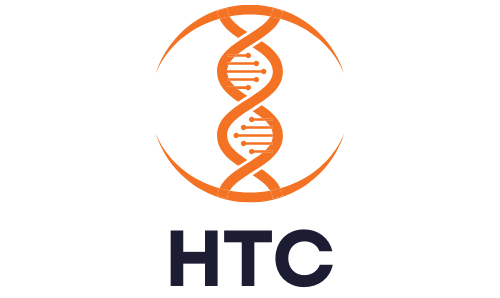Navigating the Landscape of Biopharmaceutical Investing
The biopharmaceutical industry stands as a cornerstone of the healthcare sector, offering significant contributions to medical advancements and patient care. With the potential to develop groundbreaking therapies, biopharmaceutical companies present attractive opportunities for high-growth investments. These opportunities come from the industry's continuous drive to innovate and address some of the most pressing medical needs.
However, the path to successful investing in this sector is far from straightforward. The biopharmaceutical landscape is marked by its complexity, involving lengthy development timelines, stringent regulatory requirements, and substantial financial risks. Investors need a deep understanding of these dynamics to navigate this challenging environment effectively.
This article aims to explore the key considerations and strategies necessary for making informed investment decisions in the biopharmaceutical industry. By delving into the therapeutic areas and modalities that are attracting investment, assessing the inherent challenges and risks, and outlining strategies for evaluating investment opportunities, we hope to provide a comprehensive guide for investors looking to capitalize on the potential of this dynamic field.
Therapeutic Areas and Modalities to Watch
Importance of Targeting Unmet Medical Needs
One of the primary drivers of investment in the biopharmaceutical sector is the potential to address significant unmet medical needs. These needs represent areas where current treatments are inadequate or nonexistent, offering opportunities for companies to develop innovative therapies that can make a substantial impact on patient outcomes. Focusing on these areas not only has the potential to transform lives but also provides lucrative market opportunities for investors.
Oncology
Oncology remains at the forefront of biopharmaceutical innovation. The development of novel targeted therapies, immunotherapies, and precision medicine approaches has revolutionized cancer treatment.
- Targeted Therapies: These treatments specifically target cancer cells based on their genetic and molecular profiles, minimizing damage to healthy cells. This approach can lead to more effective and less toxic treatments.
- Immunotherapies: By harnessing the body's immune system to fight cancer, immunotherapies have shown remarkable efficacy in treating various types of cancer. Examples include checkpoint inhibitors and CAR-T cell therapies.
- Precision Medicine: Precision medicine involves tailoring treatments to the individual characteristics of each patient’s cancer. By using genomic profiling to identify specific mutations and biomarkers, these therapies can be highly personalized, improving their effectiveness and reducing side effects.
Rare Diseases
Rare diseases, often referred to as orphan diseases, affect a small percentage of the population but present significant opportunities for biopharmaceutical innovation.
- Gene Therapy: This cutting-edge technology aims to treat or even cure diseases by correcting defective genes within a patient’s cells. Gene therapy has shown promise in treating conditions that were previously deemed untreatable.
- RNA Therapeutics: RNA-based treatments, such as RNA interference (RNAi) and messenger RNA (mRNA) therapies, are being developed to target and regulate the expression of specific genes. These therapies have the potential to address a wide range of rare genetic disorders.
Cell and Gene Therapies
Cell and gene therapies represent a new frontier in regenerative medicine, attracting substantial investment from both established pharmaceutical companies and startups.
- Cell Therapies: These involve the transplantation of human cells to replace or repair damaged tissue and cells. Stem cell therapies and CAR-T cell therapies are notable examples.
- Gene Therapies: Innovations in gene editing technologies, such as CRISPR-Cas9, have opened new possibilities for treating genetic disorders by directly altering the DNA within a patient’s cells.
- Regenerative Medicine: This field focuses on regenerating or replacing damaged tissues and organs, aiming to restore normal function. The potential applications of regenerative medicine are vast, spanning across numerous medical conditions and diseases.
By investing in companies that are pioneering these therapeutic areas and modalities, investors can position themselves at the cutting edge of medical innovation, with the potential for significant returns and transformative impacts on healthcare.
Challenges and Risks
Drug Development
Investing in biopharmaceuticals can be highly rewarding, but it is fraught with challenges and risks, primarily due to the complex nature of drug development.
- Lengthy and Capital-Intensive Process: Developing a new drug is a long and expensive journey. On average, it can take over a decade from the initial discovery phase to the final approval by regulatory bodies. The costs associated with this process often exceed $1 billion, encompassing extensive research, development, clinical trials, and regulatory compliance.
- High Failure Rates: The path to drug approval is laden with uncertainties. A significant percentage of drug candidates fail during clinical trials, either due to lack of efficacy or safety concerns. This high attrition rate underscores the inherent risk in biopharmaceutical investments.
- Regulatory Hurdles: Navigating the regulatory landscape is a critical aspect of drug development. Regulatory agencies, such as the FDA in the United States and the EMA in Europe, have stringent requirements for approving new drugs. The approval process involves multiple phases of clinical trials, each with its own set of challenges and timelines. Delays or failures in any phase can derail a drug's development.
Pricing Pressures and Reimbursement Challenges
Pricing pressures and reimbursement issues add another layer of complexity to biopharmaceutical investments.
- Balancing Profitability with Accessibility: Biopharmaceutical companies must find a balance between setting prices that ensure profitability and making their therapies accessible to patients. High drug prices can lead to public backlash and policy interventions aimed at controlling healthcare costs.\
- Reimbursement Challenges: Securing reimbursement from healthcare payers, including insurance companies and government programs, is critical for the commercial success of new therapies. Companies must demonstrate the clinical and economic value of their products to obtain favorable reimbursement terms. This process can be complex and varies significantly across different markets and healthcare systems.
Intellectual Property Protection
Intellectual property (IP) protection is a cornerstone of the biopharmaceutical industry, as it ensures that companies can recoup their investment in drug development.
- Importance of Patents and Exclusivity Periods: Patents provide a period of market exclusivity, during which competitors cannot market generic versions of the drug. This exclusivity is crucial for recovering the substantial costs associated with drug development. The duration of patent protection varies, but it typically lasts 20 years from the filing date, with additional extensions available in certain cases.
- Evaluating the Strength of a Company's Patent Portfolio: Investors must carefully assess the robustness of a company's IP portfolio. Key considerations include the breadth and validity of the patents, the potential for patent challenges, and the company's strategy for extending market exclusivity. Strong IP protection can significantly enhance a company's competitive position and investment attractiveness.
Navigating these challenges requires a deep understanding of the biopharmaceutical landscape, a thorough evaluation of investment opportunities, and a strategic approach to risk management. Despite the risks, the potential rewards in terms of financial returns and transformative impacts on healthcare make biopharmaceutical investing a compelling proposition.
Strategies for Evaluating Biopharmaceutical Investment Opportunities
To navigate the complexities and maximize the potential of biopharmaceutical investments, a rigorous evaluation process is essential. Here are key strategies to consider:
Pipeline Analysis
A comprehensive review of a company's product pipeline is crucial for understanding its potential for success.
- Reviewing Product Pipelines: Examine the breadth and depth of the company's pipeline, including the stages of development for each product. Assess the scientific rationale behind each candidate, supported by preclinical and clinical data.
- Scientific Rationale and Clinical Data: Evaluate the underlying science and mechanism of action for each drug candidate. Strong scientific evidence and positive clinical trial results enhance the attractiveness of the investment.
- Competitive Landscape: Analyze how the company's pipeline stands against existing and emerging therapies. Consider the level of innovation and differentiation that the company's products offer.
- Market Size and Unmet Medical Needs: Assess the potential market size for each drug candidate. Focus on areas with significant unmet medical needs, as these represent substantial opportunities for growth and impact.
Regulatory and Clinical Risk Assessment
Understanding the regulatory and clinical pathways is vital to gauge the risks and potential delays in bringing a product to market.
- Regulatory Pathways: Examine the regulatory approval process for each product candidate. Consider the specific requirements and hurdles in different markets, such as the FDA in the U.S. or the EMA in Europe.
- Clinical Trial Designs: Evaluate the design and endpoints of ongoing and planned clinical trials. Well-designed trials with clear, achievable endpoints are critical for regulatory success.
- Associated Risks: Identify potential regulatory and clinical risks, including safety concerns, efficacy challenges, and trial execution issues. Understanding these risks helps in assessing the likelihood of successful approval and commercialization.
Financial and Valuation Analysis
A thorough financial analysis ensures that the company has the resources to advance its pipeline and generate returns.
- Financial Performance: Analyze the company's historical and projected financial performance, including revenue, profitability, and cash flow.
- Cash Runway and Funding Requirements: Evaluate the company's current cash position and its ability to fund ongoing and future operations. Consider the need for additional capital and the potential sources of funding.
- Valuation Methodologies: Use appropriate valuation techniques such as risk-adjusted net present value (rNPV) to account for the high risk and uncertainty inherent in drug development. This approach adjusts for the probability of success at each stage of development.
Management and Execution Capabilities
The strength and experience of the management team are crucial for executing the company's strategic plans and achieving success.
- Management Team Strength: Assess the expertise and track record of the management team in drug development, commercialization, and business development.
- Track Record in Drug Development: A history of successfully bringing drugs to market is a strong indicator of the team's capability.
- Strategic Plans and Partnership Execution: Evaluate the company's strategic plans, including partnerships, collaborations, and licensing agreements. Effective execution of these plans is essential for growth and value creation.
Competitive Landscape and Market Dynamics
Understanding the competitive environment and market trends helps in assessing the long-term viability of the company's products.\
- Potential Competitors: Identify current and potential competitors, both direct and indirect. Consider their strengths, weaknesses, and market positioning.
- Emerging Technologies: Stay informed about emerging technologies that could impact the market dynamics and competitive landscape.
- Market Dynamics: Analyze trends in the healthcare industry, such as changes in regulatory policies, pricing pressures, and shifts in healthcare delivery models.
Exit Strategies and Potential Acquirers
Having a clear understanding of potential exit strategies is crucial for realizing returns on investment.
- Initial Public Offerings (IPOs): Consider the feasibility and timing of taking the company public. An IPO can provide significant capital and liquidity.
- Mergers and Acquisitions (M&A): Evaluate the potential for the company to be acquired by a larger biopharmaceutical firm. M&A activities can provide lucrative exit opportunities.
- Strategic Partnerships: Assess the potential for strategic partnerships with established companies. These partnerships can provide capital, resources, and market access while offering an exit pathway.
By employing these strategies, investors can make informed decisions and navigate the complexities of the biopharmaceutical investment landscape effectively.
The Role of Precision Medicine and Digital Health
Precision Medicine Precision medicine represents a paradigm shift in healthcare, focusing on tailoring treatments to the individual genetic and molecular profiles of patients. This approach enables the development of highly targeted therapies that can significantly improve patient outcomes and reduce the risk of adverse effects. Companies like Notable Labs are at the forefront of this movement, utilizing advanced genomics and AI-driven predictive models to create personalized cancer treatment plans. By identifying the unique genetic markers and molecular characteristics of a patient's tumor, Notable Labs' platforms can predict the most effective therapies, ensuring that patients receive treatments that are specifically suited to their individual conditions. This precision in treatment not only enhances efficacy but also optimizes the overall patient care experience.
Digital Health Technologies Digital health technologies, including wearable devices, mobile apps, and telemedicine, are revolutionizing the biopharmaceutical industry by providing new tools for patient care and data collection. Wearable devices can continuously monitor vital signs and health metrics, offering real-time insights that are invaluable for managing chronic conditions and monitoring treatment efficacy. Mobile health apps facilitate patient engagement and adherence to treatment plans by providing reminders, educational resources, and direct communication channels with healthcare providers. Telemedicine has expanded access to healthcare, allowing patients to consult with specialists from the comfort of their homes, which has been particularly important during the COVID-19 pandemic.
Moreover, these digital health technologies significantly enhance clinical trial processes. Wearable devices and mobile apps can streamline patient recruitment by identifying eligible participants more efficiently and ensuring consistent data collection. Real-time monitoring enables more accurate tracking of patient outcomes and adherence to treatment protocols, leading to more robust and reliable clinical trial results. The integration of real-world data collected through these technologies provides deeper insights into how treatments perform outside controlled clinical settings, aiding in the continuous improvement of biopharmaceutical products.
By leveraging precision medicine and digital health technologies, the biopharmaceutical industry is poised to make significant advancements in developing more effective, personalized, and accessible treatments. Investors should pay close attention to companies that are at the cutting edge of these innovations, as they represent the future of healthcare and offer promising opportunities for growth and impact.
Conclusion
Investing in the biopharmaceutical industry offers the potential for significant returns, driven by groundbreaking therapies and the continuous evolution of healthcare solutions. However, it is not without its complexities. The lengthy and capital-intensive drug development process, stringent regulatory requirements, and dynamic market forces require investors to adopt rigorous evaluation strategies and maintain a deep understanding of the competitive landscape.
The importance of a thorough pipeline analysis, comprehensive regulatory and clinical risk assessment, and robust financial and valuation analysis cannot be overstated. Additionally, evaluating the strength of the management team and understanding market dynamics are crucial steps in identifying viable investment opportunities. By focusing on these strategies, investors can make informed decisions that maximize their chances of success.
Monitoring emerging trends, such as precision medicine and digital health technologies, is also essential. These innovations are reshaping the biopharmaceutical landscape, offering new opportunities for targeted, effective, and personalized treatments. Companies like Notable Labs, which are at the forefront of these advancements, exemplify the transformative potential of integrating cutting-edge technologies with healthcare.
Investors are encouraged to effectively assess and manage risks while capitalizing on these innovations to achieve success in the biopharmaceutical industry. By staying informed, conducting thorough research, and strategically navigating this complex landscape, investors can not only achieve substantial financial returns but also contribute to the advancement of healthcare, ultimately improving patient outcomes and fostering a healthier society.










